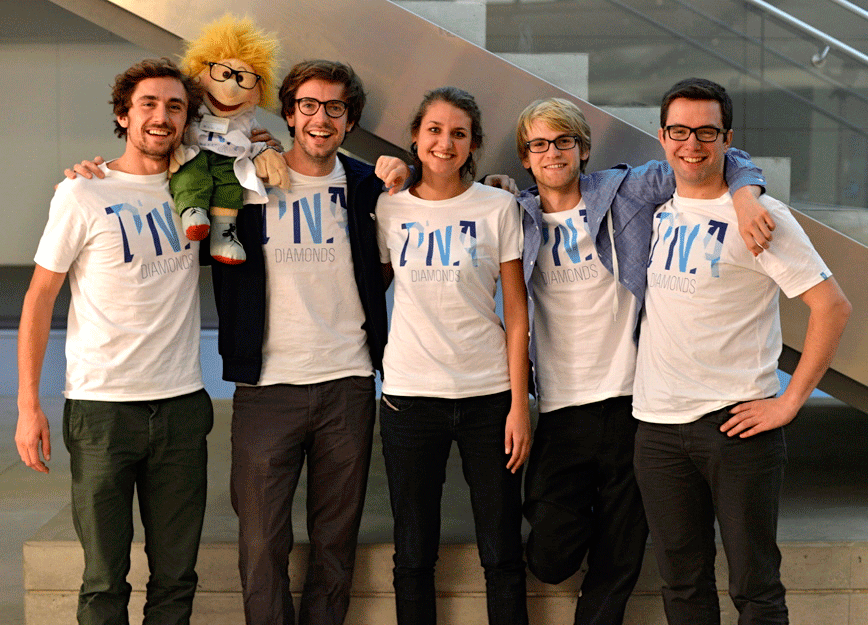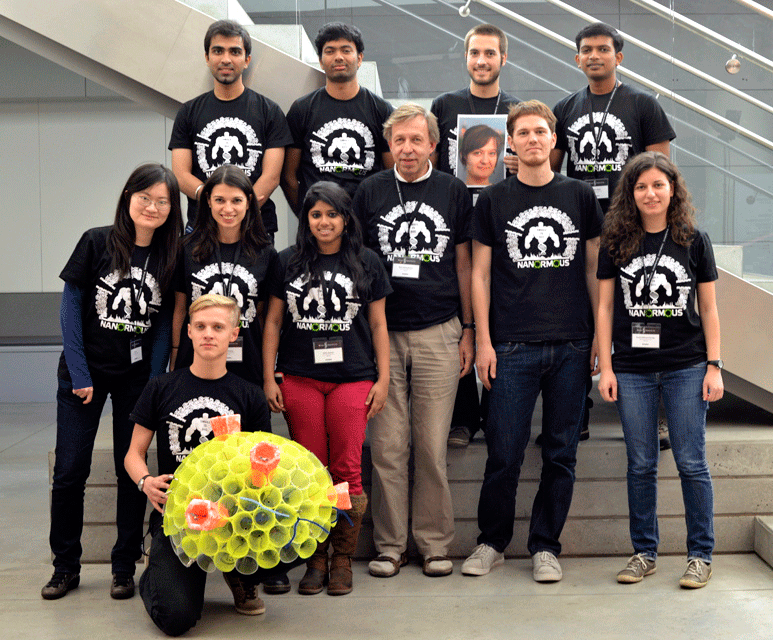Students from around the world competed at Harvard University this weekend in the Wyss Institute’s third annual BIOMOD Jamboree – a bio-molecular design competition. The “DNA Diamonds” from the Ludwig-Maximilians-Universität of Munich return home to Germany today with the grand prize for their strategy to attach fluorescent nanodiamonds on DNA origami structures. BIOMOD engages young scientists in the field of bionanotechnology by providing students with an opportunity to engineer biological molecules into nanoscale structures, systems, or machines, which can be programmed and used for a wide range of scientific and technological purposes.
The Wyss Institute launched BIOMOD in 2011 with the goal of introducing the next generation of scientists and engineers to bionanotechnology, an area central to the field of Biologically Inspired Engineering.

Wyss Institute core faculty member Neel Joshi, Ph.D. said, “BIOMOD fosters a union between the playful, creative vibe that happens when you bring together groups of excited undergraduates and the easily accessible biomolecular design tools that are at the cutting edge of research." Dr. Joshi, a faculty mentor for the Harvard team, believes events such as BIOMOD provide an effective way for the next generation of scientists and engineers to innovate and explore. Team Harvard BioDesign received a gold project award, placing them in the top half of the competitors.
Each of the 23 teams presented their designs to a panel of BIOMOD faculty mentors and bionanotechnology experts who evaluated teams on their ability to meet technical benchmarks, such as the complexity and speed of self-assembly, and their design’s potential to advance enabling technologies. The finest teams earned awards in seven categories, including Denmark’s "Nano Creators" for best presentation, and Japan’s team Komaba for greatest contribution to molecular robotics.

The grand prize winners developed a biocompatible coating strategy to functionalize the surface of nanodiamonds in order to attach them to specific sites on DNA origami structures. Fluorescent nanodiamonds are already finding application in biology such as bio-imaging, drug delivery, gene transfer and cancer therapy. Attaching nanodiamonds to DNA origami could enable new, more effective ways of using them in such biological applications. The “DNA Diamonds” team, which also received the award for best wiki, will continue to work on this project. Learn more.
Team Dresden "Nanormous" was the first runner-up for the grand prize. They designed and built smart, hollow nanoreactors that can encapsulate an enzyme and through the addition of antibodies could one day be used to fight cancer. Watch the team’s award-winning YouTube video here.
The innovative ideas and projects that teams worked on all summer have valuable real-world applications. A number of teams assembled DNA nanostructures to create a targeted drug delivery system. Other students used DNA origami to create a technology that could be useful for therapy or diagnostics, as well as many neurological and psychiatric disorders. One team assembled multi-enzyme biomolecular machines for performing safe and painless bio-tattoos.

“I’m ecstatic to see how BIOMOD is growing and generating so much excitement in the field of bionanotechnology,” said Shawn Douglas, Ph.D., BIOMOD founder, former Wyss Institute Technology Fellow and currently assistant professor at the University of California, San Francisco (UCSF). “The work and enthusiasm we saw this weekend speaks for itself and is self propagating, so I hope we can scale the competition to meet the demand in the future.”
A complete list of winning projects and participating teams is available at http://biomod.net/winners.